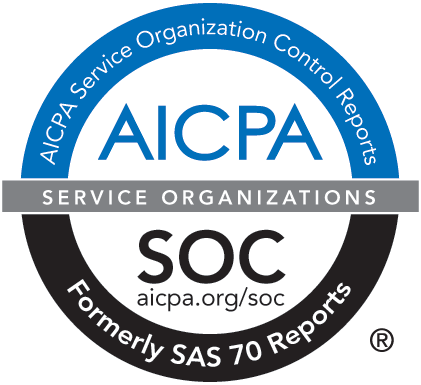Navigating Volatile Markets: We’re Ready.
March 30, 2020 - As an investment management organization founded in 1930, we are no stranger to global crises and market upheavals. Our highly disciplined investment program is based on our belief that fundamentally sound investment and risk management practices, when applied consistently, improve the ability to meet your investment objectives.
Our philosophy centers around five tenets and for the next five weeks, we will share one investment tenet a week.
Long-Term Focus: An Endowment's Superpower
Endowment funds offer a unique strength: time. Endowments are, by their nature, perpetual - unencumbered by life expectancy or retirement dates. With an endowment, time is on your side. The unlimited investment time horizon of an endowment provides perspective, fosters patience, and enhances performance.
A fundamental aspect of investing is that returns are unpredictable. The market has its ups and downs. Because endowment funds do not have time constraints, their investors can seek and find long-term returns. It is this long-term perspective that provides endowment decision-makers the ability to be patient in stressful market conditions. With the knowledge that down markets return in time and the assurance that they have time to wait for the upswing, endowment investors can overcome making the reactionary decisions that often lead to devastating results. With this long-term perspective, endowments are managed for maximum return and risk efficiency.
Staying Active: Active or Passive Management?
Active management is a key tenet of HighGround’s investment philosophy used in our investment portfolios for over 35 years. Although active management has been more challenging in recent years, our research and performance history suggests it can add economic value above market benchmark indices and investment fees in most publicly traded equity and fixed income markets. The exception, however, is U.S. large cap equity, a highly efficient market where outperforming passively managed options is more challenging after-fees. For this reason, we use a combination of passive and active management in HighGround’s large cap U.S. equity portfolios.
HighGround’s actively managed portfolios tend to hold higher-quality securities which can be particularly beneficial in periods of heightened market volatility. Sometimes the value of active management is realized more fully in market dislocations. In down markets, it is often beneficial to have a risk-controlled portfolio of well-managed, industry-leading companies that are better able to maintain value and protect capital. In contrast, passive index strategies, by design, capture the market's full decline. Click here to hear more from our CIO on active and passive investing. However, if a client partner desires a solution using all index funds, we will gladly provide that solution.
Stay The Course: Remain Disciplined
A disciplined investment process requires effective strategy development, implementation, and oversight. But what does it mean to stay disciplined?
- Being disciplined doesn’t mean sitting still. Managing a portfolio never stops. Once your portfolio is invested, HighGround monitors your strategy to ensure it adheres to policy guidelines, including oversight of investment managers, rebalancing portfolios, risk management, and performance reporting.
- Being disciplined means maintaining a portfolio through all market conditions, even unfavorable ones. At HighGround, we are driven by asset allocation, diversification, fund management (active and/or passive) and investment discipline, not the markets or short-term considerations. We believe the best advice and course of action in challenging markets is to stay the course unless your circumstances or objectives change.
Diversification: Best Defensive Move
We believe better-diversified portfolios have greater potential for long-term growth. Spreading investments into different equity and fixed income markets, while also investing in non-traditional alternative asset classes, is the best defense for softening market volatility. Return streams of well-diversified strategies are expected to be less volatile because performance correlations among individual asset classes tend to vary with one another, reducing overall portfolio volatility. In other words, when one asset class “zigs,” others “zag,” tempering volatility and importantly protecting asset value when capital markets experience dramatic downdrafts.
Balance & Reward: Asset Allocation
Asset allocation is the primary driver of an endowment fund’s expected return, income and risk. It also provides the greatest influence on the likelihood of an endowment fund meeting its real, after inflation, distribution targets. Studies have shown that over 90% of an investment portfolio’s return variability is due to asset allocation, with less than 10% coming from security selection and other investment decisions.
To better understand our asset allocation strategy, it’s important to know what our objectives are:
- Maximizing total return with acceptable risk levels
- Providing a stable source of cash flow funding to our nonprofit clients
- And preserving purchasing power
When HighGround designs multi-asset class portfolios, we include stocks that will take full advantage of normal and upward trending market environments. From a functional perspective, we group asset classes in three buckets:
- Growth: Growth investments are composed of publicly traded stocks and investments in privately held companies. They are expected to gain in value over time but with higher levels of risk and volatility.
- Real Assets: The role of real assets is to protect against unexpected inflation. Real asset investments include private real estate, private energy, and inflation-protected US Treasury securities which are included in our fixed-income portfolio. Real asset investments can also include timber, agriculture, and infrastructure.
- Risk Reduction Investments: Finally, the role of risk reduction investments is to protect portfolios against periodic market swings. They include fixed income and cash as well as hedge funds that reduce some of the market’s risk.



